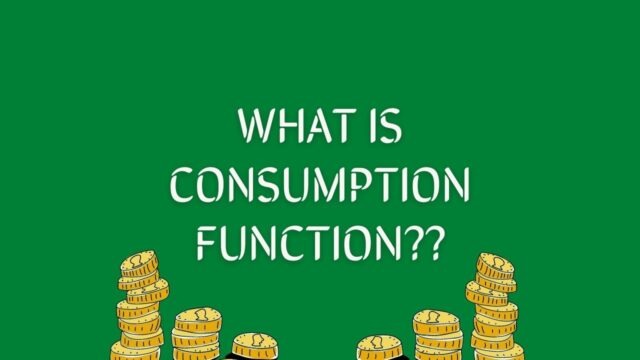
Consumption Function
The consumption function is an economic theory that describes the relationship between consumption and disposable income. It is believed to have been introduced into macroeconomics by John Maynard Keynes in 1936, who used it to develop a government spending multiplier. In the article below, we look at the psychological law of consumption, Keynes’s equation, and the role of Urbanisation and interest rates. Let’s start with Keynes’s equation. Keynes argues that consumption is a function of both the income of households and the disposable income of individuals.
Keynes’s psychological law of consumption
The idea behind Keynes’s psychological law of consumption is that as income increases, individuals are able to satisfy more wants, but they don’t spend all of the extra money on consumption. Instead, they save a portion of their new income, thus balancing the income and consumption. If we were all so good at saving, we’d have more to spend on the things we really want. But that is not the case.
Keynes’s equation
In a macroeconomic model, Keynes’s equation for the consumption function determines the equilibrium of national income. Keynes considered consumption to be a function of national income and called the relationship between consumption and national income a fundamental psychological law. The marginal propensity to consume is less than one, while the consumption income ratio falls as income increases. Hence, the consumption income ratio reflects the non-proportional relationship between consumption and income. The aggregate real consumption expenditure depends on the aggregate national income.
Urbanisation consumption function
The consumption function of urbanisation can be viewed as a proxy for urbanization rates. Although urbanisation has been associated with pro-poor social reforms over the last two centuries, the opposite can also be true. If urbanization exceeds economic restructuring rates, the excess labour force may become difficult to absorb. In these cases, the consumption function of urbanisation may have a counter-productive effect. However, the determinants of consumption in cities are important in understanding the relationship between growth rates, inequality and the nature of the economy.
Interest rate
In a macroeconomic model, the interest rate affects consumption and investment expenditure, but the relationship is not linear. A change in interest rates changes the prices of financial assets and thus the wealth of households. A fall in interest rates raises the household’s financial wealth, which in turn increases autonomous consumption expenditure. A rise in interest rates reduces autonomous consumption expenditure. Therefore, the relationship between interest rate and consumption is negative. However, it does not mean that a lower interest rate is necessarily a bad thing.
Price level consumption function
The price level in the consumption function refers to the average price of a given good, service, or security in an economy. Price levels may be discrete or small ranges, and they are closely monitored by economists. They are important indicators of the purchasing power of consumers, as well as the supply and demand chain. In economics, the price level is known as the consumer price index. It helps economists analyze the price dynamics of the economy.
Real wealth
The real wealth consumption function describes how the level of the price of goods and services affects the amount of consumption a person makes. Increases in real wealth are good for the consumption function. They increase the amount of consumption, while decreases in real wealth are bad for it. Changing prices are a major factor in shifting this upward or downward. Several factors can affect the real wealth consumption function. A sharp increase in prices would cause consumers to cut back on the purchases of durable goods and services.
Consumption function tax policy
VAT is a major part of OECD countries’ revenue from taxes on consumption. It accounts for a significant portion of the total tax revenue of most countries, and represents about one third of GDP in Hungary. The United States raises the least amount of VAT, with sales and excise taxes accounting for a higher share. The number of OECD countries with VAT varies between ten and twenty percent. It is the most commonly used consumption tax by consumers.


































